
views
X
Research source
It’ll take a little time to learn AMA’s rules for different source types, in-text citations, and lists of references. But don’t worry! Once you get the hang of it, you won’t even have to double-check that your citations are correct!
Citing Different Source Types in AMA
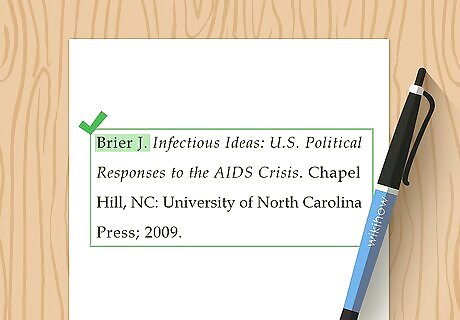
Start by citing a book with one author to learn the basic format. It’s pretty simple to cite a book with just one author and no editor, especially if it’s a first edition! Type the author’s name with their last name first and the first letter of their first name second. Next, provide the title in italics. Finally, write out the location and name of publisher, along with date of publication. For example: Brier J. Infectious Ideas: U.S. Political Responses to the AIDS Crisis. Chapel Hill, NC: University of North Carolina Press; 2009. If the author of the book is an organization (like the World Health Organization), just type out the full name of the organization and follow it with a period. The author and title should both be followed by periods. The publication location needs to include the city and state (or city and country if outside the U.S.), and it should be followed by a colon. Use a semicolon to separate the publisher’s name and date of publication.
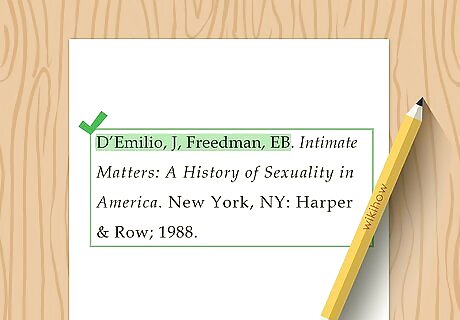
Cite books with 2 to 6 authors by separating their names with commas. For these sources, every rule is the same as citing a single-author book except for the added author. For example: D’Emilio, J, Freedman, EB. Intimate Matters: A History of Sexuality in America. New York, NY: Harper & Row; 1988. If an author includes their middle initial on the title page, you should too! Don’t separate it from the first letter of their first name with any type of punctuation, though.
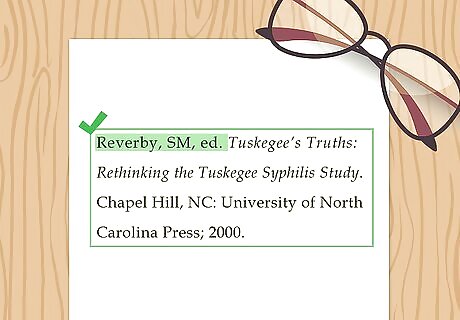
Make small adjustments for edited books or different editions. All you need to do for an editor is add the abbreviation “ed.” after the author’s name. If there are multiple editors, list them and then type “eds.” For a different edition than the first, add something like “5th ed.” right after the italicized title. An example of book with an editor: Reverby, SM, ed. Tuskegee’s Truths: Rethinking the Tuskegee Syphilis Study. Chapel Hill, NC: University of North Carolina Press; 2000. An example of a different edition: Strom, BL. Textbook of Pharmacoepidemiology. 2nd ed. Hoboken, NJ: Wiley; 2013.

Replace authors’ names with “et al” when there are 7 or more. If there are 7 or more contributors, type out only the first three that are listed on the title page. This goes for editors, too! Then add a comma and write out “et al.” For example: Fauci, AS, Braunwald, E, Kasper, DL, et al., eds. Harrison’s Principles of Internal Medicine. 17th ed. New York, NY: McGraw Hill; 2008.
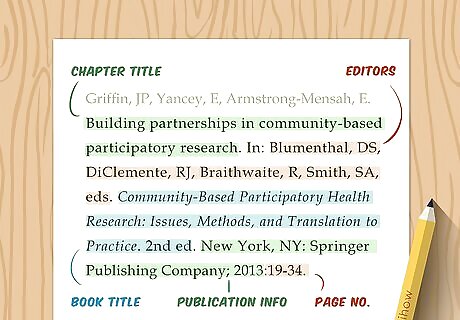
Cite only one chapter of a book if that’s all you’re referencing. The title of the chapter should be listed right after the name of the author of the chapter with only the first word capitalized. Next, type “In:” followed by the names of the editors of the book. Write out the title and publication info like you normally would, then include the page numbers of the chapter. For example: Griffin, JP, Yancey, E, Armstrong-Mensah, E. Building partnerships in community-based participatory research. In: Blumenthal, DS, DiClemente, RJ, Braithwaite, R, Smith, SA, eds. Community-Based Participatory Health Research: Issues, Methods, and Translation to Practice. 2nd ed. New York, NY: Springer Publishing Company; 2013:19-34. Do not include a space between the colon and the page numbers of the chapter.

Include the title of a journal article along with the journal’s name. Start the citation by listing the author(s) and title of the piece. Next, type out and italicize the abbreviated title of the journal. You’ll also need to provide the publication date, volume and number of the issue the article is from, and the page numbers (in that order). For example: Scarlet, S, Dreesen, E. Surgery in shackles: what are surgeons’ obligations to incarcerated patients in the operating room? AMA J Ethics. 2017;19(9):939-946. Find abbreviations by visiting: https://www.ncbi.nlm.nih.gov/nlmcatalog?db=journals. Type the name of the journal in the search box, click on the link, and look up the title abbreviation that’s listed on the journal’s profile. Only the first word of the journal article’s title should be capitalized. Do not include spaces in between the semicolon, parentheses, and colon when listing the publication date, volume and number of the issue, and the page numbers.

Add the URL and date of access for online sources. If you’re just citing a website, list the author of the piece or the name of the organization that sponsors the website, the title of the article, the name of the website, the URL, the publication and/or updated date, and then the date of access. For example: U.S. National Library of Medicine. Chickenpox. MedlinePlus website. https://medlineplus.gov/ency/article/001592.htm. Updated September 5, 2017. Accessed September 27, 2017. If you’re citing an online journal article that lists a DOI (digital object identifier), you should use this in place of the hyperlink. For example: Scarlet, S, Dreesen, E. Surgery in shackles: what are surgeons’ obligations to incarcerated patients in the operating room? AMA J Ethics. 2017;19(9):939-946. 10.1001/journalofethics.2017.19.09.pfor1-1709. Accessed September 27, 2017.
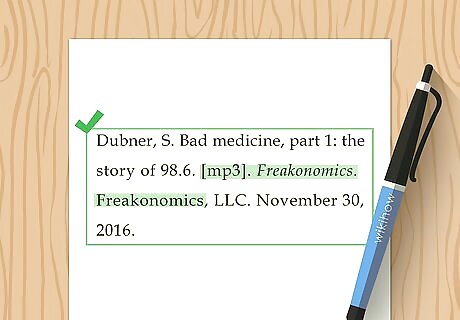
Include the format for video and radio sources. Start with the author or host, and then write out the title of the piece. Then, say whether the source was accessed through VHS, DVD, mp3, or another electronic format and put this format in brackets. Include and italicize the title of the program if there is one. Finally, list the publication location, publisher, and date of publication as you normally would. For example: Dubner, S. Bad medicine, part 1: the story of 98.6. [mp3]. Freakonomics. Freakonomics, LLC. November 30, 2016. For films, the title should be italicized. Any information you can’t find, such as the publication location, can be left out. If no author is listed, list the publisher first.
Formatting Your Reference List
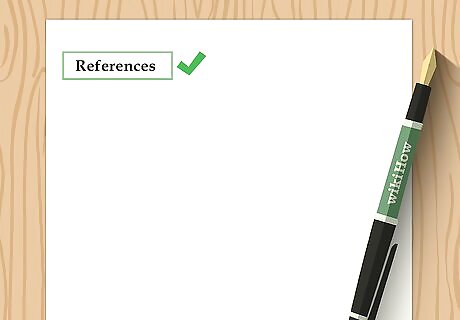
Make a new page titled “References” for your list. Keep the title left-hand justified, rather than centered. “References” should appear in bold.
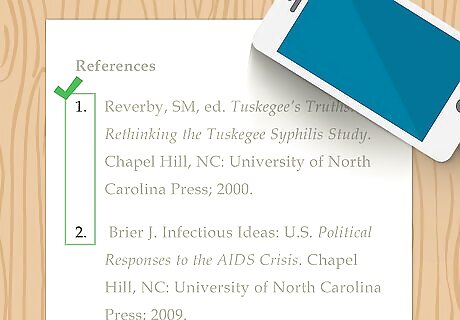
List references in the order you cited them in your paper. The first source you cite gets number 1, the second number 2, and so on. Keep track of the numbers assigned to each source, as you’ll be using them for your in-text citations. Once that first source is number 1 in the list of references, it’ll be represented by the superscript “1” in the in-text citations throughout the paper.

Type the number then indent 0.5 inches (1.3 cm). Use Arabic numbers followed by a period. Then, press the “tab” key once. Now you’re ready to start your reference! A sample reference list would look like this: 1. Reverby, SM, ed. Tuskegee’s Truths: Rethinking the Tuskegee Syphilis Study. Chapel Hill, NC: University of North Carolina Press; 2000. 2. Brier J. Infectious Ideas: U.S. Political Responses to the AIDS Crisis. Chapel Hill, NC: University of North Carolina Press; 2009. 3. Griffin, JP, Yancey, E, Armstrong-Mensah, E. Building partnerships in community-based participatory research. In: Blumenthal, DS, DiClemente, RJ, Braithwaite, R, Smith, SA, eds. Community-Based Participatory Health Research: Issues, Methods, and Translation to Practice. 2nd ed. New York, NY: Springer Publishing Company; 2013:19-34. 4. Scarlet, S, Dreesen, E. Surgery in shackles: what are surgeons’ obligations to incarcerated patients in the operating room? AMA J Ethics. 2017;19(9):939-946. 10.1001/journalofethics.2017.19.09.pfor1-1709. Accessed September 27, 2017.
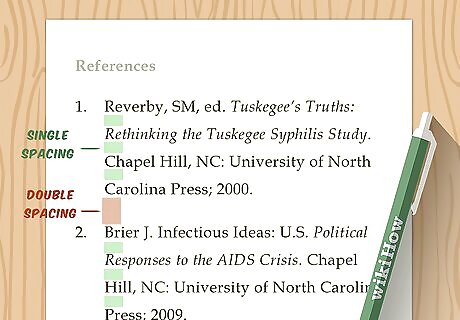
Use single spacing within citations and double spacing in between. If your citation takes up two lines, there should be no spaces in between those lines. The second and subsequent lines should not be indented. Add a space when you’re ready to move to the next citation.
Doing In-Text Citations

Add citations right after the fact, idea, or quotation you’ve included. This means that in-text citations may occasionally come in the middle of a sentence. However, if the entire sentence is related to the idea(s) you’re citing, place the citation(s) at the end of the line. For every in-text citation, be as clear as possible in connecting the citation directly to the relevant information in your paper.

Use a superscript Arabic number to represent the citation. These are the small numbers that appear above the line of text. They look like this.¹ For most programs (including Google Docs), you can add these to your paper by choosing the “Insert” tab in your document, clicking on “Special Characters,” and looking up “superscript.” Select the number you need!
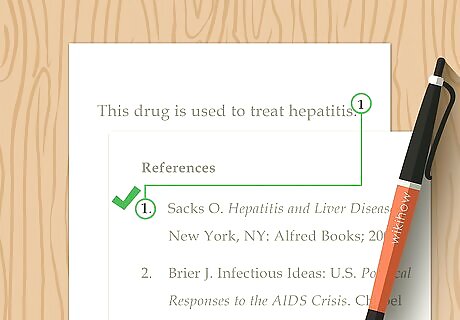
Connect citation numbers to the list of references. Since you’re only listing a superscript number in the text of your paper, the rest of the information has to appear somewhere! Each citation number corresponds to an entry in your list of references.
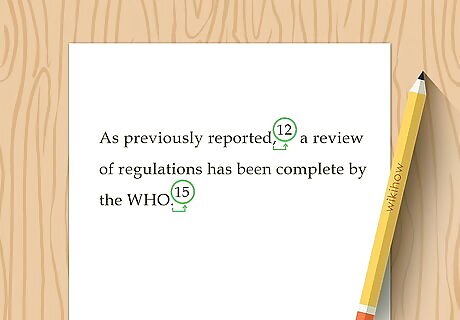
Put the superscript outside periods and commas. After a comma, do it like this,³ and after a period, it should look like so.⁶
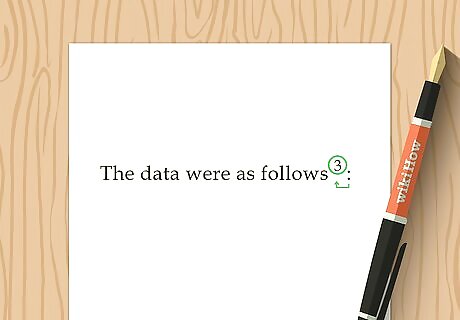
Place the superscript inside semicolons and colons. This means that your superscript placement should look like this⁸; and this⁹: if you’re following the rules!
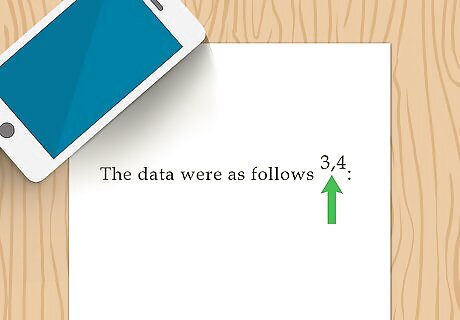
Separate multiple citations with a comma but no spaces. Sometimes, you’ll need to cite more than one source at a time. In this case, your superscripts will appear like so.³,⁴
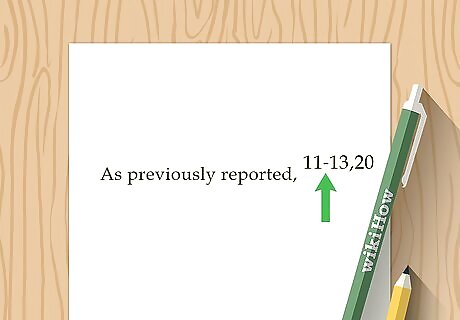
Use a hyphen if you’re citing multiple sources in numerical order. A hyphen can be used if you’re citing more than 2 sources that are all in numerical order. For example, if you had a single sentence that included information from the first, second, third, and fourth entries in your list of references, you would end the sentence like so.¹⁻⁴




















Comments
0 comment